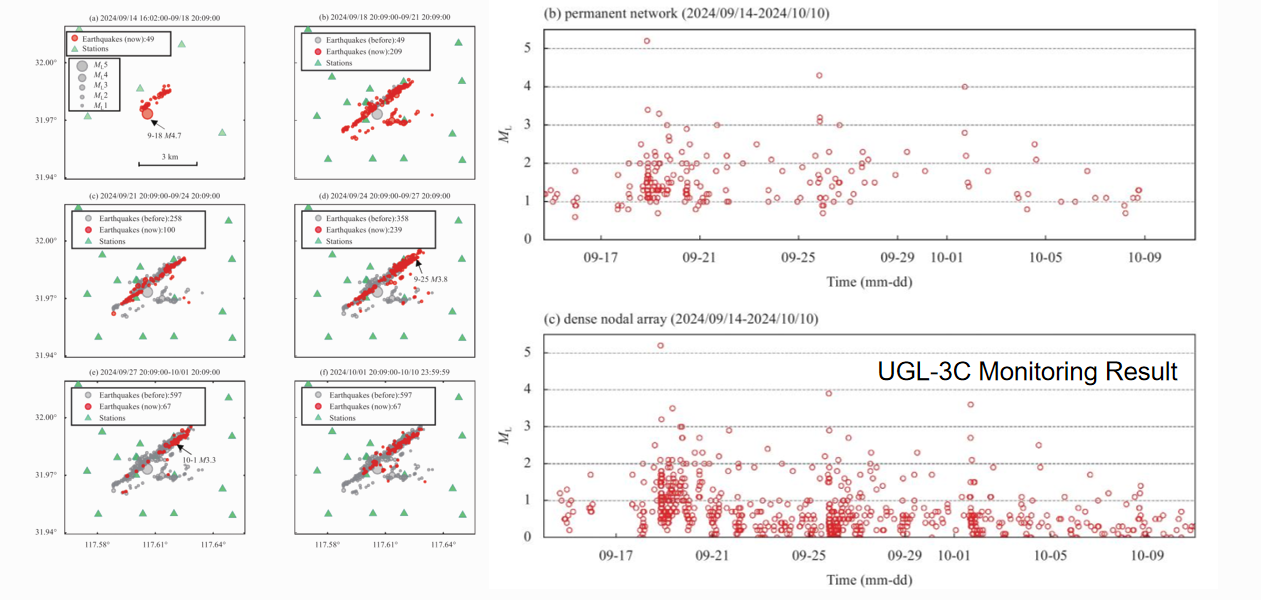M4.7 Earthquake Seismogenic Structure and Seismic Environment Study
Jun 12,2025


This paper, titled "Preliminary study of the tectonic structure and seismogenic environment of the M4.7 Feidong earthquake sequence on September 18, 2024 in Hefei," investigates the characteristics and seismogenic mechanisms of an earthquake sequence that occurred in Feidong County, Hefei, Anhui Province, China. The study utilizes data from both permanent seismic stations and a temporary dense nodal array to accurately locate the earthquakes and determine their focal mechanisms. The results indicate that the earthquakes were concentrated around 10.5 km depth along a NW-dipping, subvertical fault trending NE. The focal mechanisms suggest that the seismic activity was driven by a regional ENE-WSW compressional stress. The study also analyzes the coseismic surface displacement using Sentinel-1 satellite data and examines the regional velocity structure and detailed fault structures using seismic tomography. The findings suggest that the M4.7 Feidong earthquake sequence likely occurred along a segment of the Zhuding-Shimenshan fault or a hidden strike-slip fault to the east. The study concludes that the probability of future surface-rupturing earthquakes in the area is relatively low due to the depth of the mainshock and the fault's inactivity in recent geological times.

*https://doi.org/10.1016/j.eqs.2024.11.001
BLOG
CONTACT
Tel: 0086-0551-65327898 / 65327899
Fax: 0086-0551-65327899
E-mail: hfgwe@hfgwe.com
Add: 9th Floor, Building A, G3, Phase II, Innovation Industry Park,No. 2800 Innovation Avenue, High-tech Zone, Hefei city,Anhui Province, China

Mobile website
Hefei Guowei Electronics Co., Ltd.
Subscribe Us
We will contact you within one working day. Please pay attention to your email.
CopyRight:Hefei Guowei Electronics Co., Ltd. Powered by 300.cn SEO






